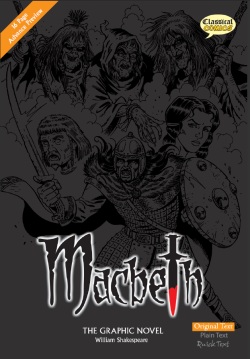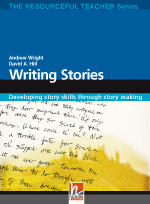Short Book Reviews
Hanna Kryszewska, Poland
Hanna Kryszewska is a teacher, teacher trainer, trainer of trainers. She is a senior lecturer at the University of Gdańsk, and EU Teacher Training College where she trains pre-service teachers. She is also Director of Studies at SWPS, Sopot, Poland. She is co-author of resource books: Learner Based Teaching, OUP, Towards Teaching, Heinemann, The Standby Book, CUP, Language Activities for Teenagers, CUP and a course book series for secondary schools: ForMat, Macmillan. She is also co-author of a video based teacher training course: Observing English Lessons. Hania is a Pilgrims trainer and editor of HLT Magazine.
E-mail: hania.kryszewska@pilgrims.co.uk

Macbeth – The ELT Graphic Novel. William Shakespeare. Adapted for ELT by Brigit Viney. (2009) Heinle. ISBN 978-1-4240-2870-2 pp.144. This version of Shakespeare’s drama is fully adapted as a graphic novel (comic) which is suitable for intermediate learners. The language of narration has been mostly adapted but some of the scenes, for example with the three witches contain some original lines. The story does not need any recommendation and the ELT market has seen many adaptations of this drama. This version, however, stands out thanks to the stunning artwork which will motivate learners who like graphic novels, and thanks to the extras. Apart from the story there is a glossary of more difficult words, information on the life of Shakespeare, the life of real Macbeth and his family tree, a list of characters with pictures as they appear in the book, a link map of characters in the story, famous quotations from the play in the original version, in the ELT version and explanation of their meaning, and an audio CD of the story. I am sure that many students will enjoy reading this and other books in the series. For more see www.classicalcomics.com

Writing Stories (2008) Helbling Languages. Andrew Wright and David. A. Hill. ISBN 978-3-85272-055-5, pp 175. The Resourceful Teacher Series. This books comes from two EFL authors who don’t need any recommendation. Their writing and training sessions have made an imprint on the EFL scene worldwide. The title of the book makes you think of other books by Andrew Wright on story telling, and, naturally you will be interested how the book is different from his earlier publications on the subject.
The book makes it clear why writing stories in the way proposed by Andrew and David is engaging for learners of all ages and levels:
- stories are important in our lives regardless of the culture we come from,
- writing stories in class is or can be similar to any other language exercise,
- students can be stretched and inspired when they create and write a story,
- students create a story themselves under the guidance of the teacher, so the teacher is just a facilitator,
- story writing follows steps or stages which are vital to the whole process and lead to the final product,
- students exercise autonomy as they choose which story or stories they want to share or circulate.
I like the way the main body of the book is structured. It starts with writing warm-ups rooted in drama techniques, then activities aimed at creating characters, starting a story, a first experience in story writing and story telling. The focus activities which start with a ‘story wheel’ are reminiscent of ‘Action Theatre’. Then come activities focusing on the language and the grammar of story writing, finally there are ready made lesson plans. I also like is the appendix which is very much Andrew Wright-ish.
It is clear that the aim of story writing is to involve the whole class and to let the learners enjoy the process much more than the final outcome, or at least enjoy the process as much as the final product. If we consider that, for example, creating a character takes 30-40 minutes, writing the whole story may take many hours. Not many teachers will have the time.
Finally, as an editor, I have to say that like the other books in this series, the book is a real beauty. It is a visual feast as it is beautifully edited with an elegant layout. To the kinaesthetic/tactile reader, the quality of the paper makes the book sheer joy to hold. Enjoy.
PS At IATEFL this year I saw the book sell like hot cakes after David Hill and Andrew Wright gave their presentation on their book. In fact I would love to publish in HLT some of the stories inspired by this resource book.



|